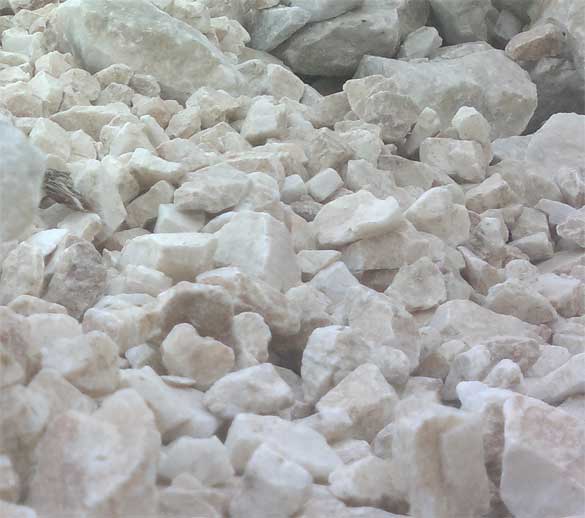Barytes

Barytes (BaSO4) is one of the chief sources ofbarium. It contains 65% of BaO and occurs eitheras crystalline or massive. It can be easily identifiedby its high specific gravity. Snowwhite/white barytesis generally used in chemical and paint industry andto a minor extent in rubber, textile, paper, cardboard,leather, oil, cloth, linoleum, plastic and ceramicindustries. The off-coloured barytes is used as drillingmud in oil well drilling.
The barytes deposits are classified into three maintypes:
- vein and cavity filling
- bedded
- residual deposits
A majority of the deposits occuras veins or cavity fillings along fault zones. Most of the barytes deposits in the Andhra Pradesh and India,including the largest one in the world at Mangampet are located in Kadapa district.
The vein type barytes, confined to the dolomiteand quartzite, is generally of superior quality andgrade. The veins are about 30 cm to 4 m thick andextend over a few hundred metres in length and upto 30 to 100 m in depth. A total reserve of about0.7 Mt was estimated up to depths ranging from15-30 m. In the Mangampeta, barytes of volcanic originoccurs as thick-bedded deposit within the PullampetShale. Four types of barytes are found viz., greygranular, lapilli/rosette, vein and replacement types.Of these, the first two types are of economicimportance. The deposit occurs as two lenses, thenorthern lens is about 12.2 km long and 900 m wideand 40 m thick whereas the southern lens is about300 m long and 80 m wide. A reserve of about 62Mt (as on 1.04.2010, IBM) of barytes withpercentage of BaO varying between 55.09 and 62.65was estimated for this deposit. The Mangampetdeposit is an addition on the mineral map and one ofthe commandable contributions by GSI.

